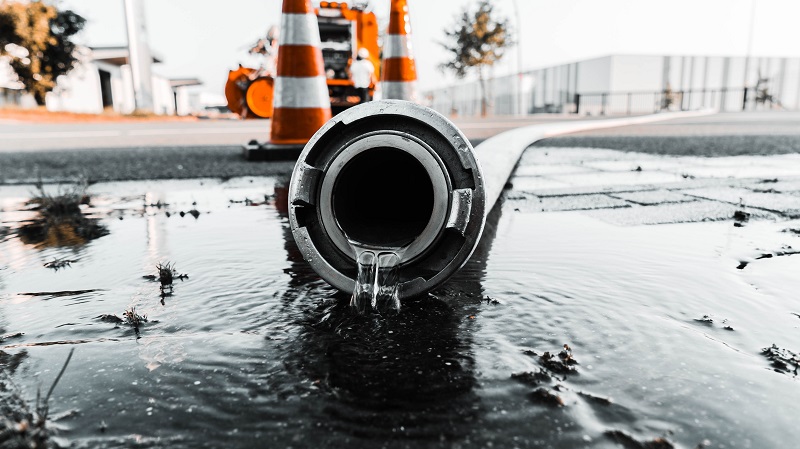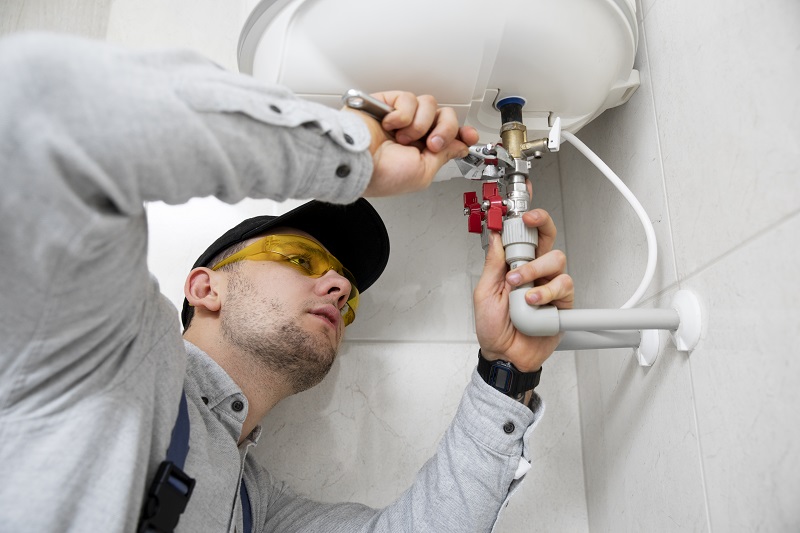Have you ever wondered if there’s a way to revive your aging pipes without tearing up your driveway? Are you tired of dealing with leaks, odd water pressure, or repeated blockages? If so, you’re in the right place. In this friendly, down-to-earth guide, we’ll walk through how you can prolong the life of your pipes using trenchless pipe relining methods that take advantage of cutting-edge materials. You’ll discover that the right choice of lining material is the key to avoiding repeated repairs.
We’ll explore the fundamentals of pipe relining, from the most common causes of pipe damage to the pros and cons of different repair approaches. You’ll also learn why “low-hanging fruit” materials—those that are easy to install yet yield excellent results—can be a game-changer for homeowners and businesses alike. Plus, we’ll walk through the differences between epoxy resin systems, Cured-in-Place Pipe (CIPP) solutions, and beyond, so you can make a well-informed decision.
By the end of this blog post, you’ll have a broad overview of the various pipe relining materials available in Australia, alongside practical tips on balancing cost, durability, and efficiency. Whether you’re facing a plumbing crisis or planning to give your home drains a fresh lease of life, this 2,000-word guide has you covered. Let’s jump in and make sure you can confidently pick the best material for your unique situation.
Pipe Relining Fundamentals
Pipe relining is a process that involves creating a new interior coating within your existing pipes, effectively giving them a second life. Unlike traditional pipe replacement, which often requires extensive digging and property disruption, trenchless relining involves minimal excavation. This means installations can often be carried out faster and with fewer headaches.
Common Causes of Pipe Damage
Most pipes are built to stand the test of time, but they’re not invincible. Corrosion, ground movement, and invasive tree roots are some of the usual suspects that weaken or break pipes. Tree roots, for example, can snake their way into even the tiniest gaps, leading to blockages and leaks. Meanwhile, external corrosion can eat away at older pipes, causing pinhole leaks that slowly degrade water flow.
Occasionally, a sudden malfunction—like a burst pipe—arises from poorly installed connections or accidental damage during landscaping. No matter the root cause, once the structure is compromised, you risk further deterioration if it’s left unaddressed. Pipe relining acts like a protective sleeve to contain leaks and prevent future cracks from developing.

Trenchless vs. Traditional Repair Methods
In the past, dealing with damaged pipes meant digging trenches throughout your yard or driveway to physically remove old segments. Traditional methods can be disruptive, expensive, and time-consuming—especially if your property includes gardens, concrete slabs, or carefully laid paving stones.
Trenchless solutions, on the other hand, use advanced materials like epoxy resin or specialised liners to build a new layer inside your existing pipe. Because the majority of the work happens internally, you avoid the chaos of open trenches. Plus, the time savings often translate into lower overall costs. This combination of minimal disruption and reasonable pricing is why pipe relining is rapidly gaining popularity among homeowners looking for a quick win.
Materials Breakdown
One popular way to pick a pipeline solution is to find the “low-hanging fruit,” which refers to materials that offer relatively straightforward installation, proven durability, and cost-effectiveness. Choosing an option that strikes a good balance helps you avoid overspending on features you don’t need while still securing a solid final result.
Epoxy Resin Systems
Epoxy resin is a well-known material in the trenchless world thanks to its strong sealing properties. It bonds firmly to a range of pipe materials, including clay, PVC, and cast iron. Once cured, epoxy forms a smooth, durable layer that resists corrosion and prevents leaks. The application process generally involves cleaning the existing pipe, then applying or blowing epoxy into place.
One of the main appeals of epoxy resin is its user-friendly nature. Contractors often highlight it as a “low-hanging fruit” choice for those seeking a lasting fix without unnecessary complexity. Epoxy cures fairly quickly, which means you can restore water flow in a short timeframe—an absolute bonus if you’re working within unpredictable Australian weather. However, cost can vary widely based on the brand and scope of work, so collecting quotes is key.
Cured-in-Place Pipe (CIPP) Solutions
CIPP solutions involve inserting a fabric-like tube soaked in resin into the host pipe. The tube is then inflated so it completely lines the walls. When the resin hardens, it forms a sturdy new layer. CIPP often uses epoxy, polyester, or vinyl ester resins, each with unique strengths and weaknesses.
What’s more, the CIPP technique can navigate bends and twists with relative ease, making it suitable for complex pipe networks. Once installed, it creates a seamless pipe-within-a-pipe, effectively blocking out tree roots and sealing cracks. Many Australian contractors endorse CIPP for its balance between achievable difficulty and promising results.
Pull-in-Place Liners
Pull-in-Place liners are used when only certain sections of your pipe need relining, rather than an entire length. The liner is precisely positioned at the problem location, then expanded to fit snugly. Once expanded, the resin in the liner cures, forming a hardworking patch that stops leaks in their tracks.
This method is especially helpful if your pipes contain multiple damaged spots spaced apart from one another. Installation times can be faster than full-length CIPP, potentially reducing property disruption. Keep in mind, though, that the success of pull-in-place liners relies heavily on pinpointing the exact areas needing repair.
UV-Cured Liners
UV-cured liners are another modern solution. Instead of letting resin cure naturally or with hot water, a UV light train passes through the inserted liner. The ultraviolet rays trigger a rapid curing process, which speeds up installation. This approach can be a huge advantage if you’re dealing with tight project deadlines or high-traffic environments such as busy commercial sites.
While UV-cured liners are known for their excellent strength and speedy installation, they often require specialised equipment. This can mean higher upfront costs, but many in the industry consider it a competitive option because of its reliability and the reduced downtime for businesses, particularly in big city environments.
Balancing Achievable Difficulty and Results
Not every pipe repair needs to be all-encompassing. Sometimes you just need a targeted approach that minimises disruption, cuts down on cost, and ticks all the boxes for Australian standards. That’s where quick wins come into play.
Minimising Disruption to Your Property
Hardly anyone wants their flowerbeds ripped apart or their driveway turned into rubble. With pipe relining, you can keep your property pretty much intact. This saves you from both the emotional stress and the additional expense of putting everything back together. Instead, the process often requires just a small access point, leaving your landscaping, paving, and fences unscathed.
Pipe relining also means less noise and dirt. If you’ve got pets or young children, you’ll appreciate how much cleaner things stay. Although you’ll likely need to switch off the water supply for a short period, the overall inconvenience is much less than with traditional excavation.
Reducing Environmental Footprint
In today’s environmentally conscious world, fewer disruptions can mean a smaller carbon footprint. By avoiding heavy machinery used for large-scale digging, you cut down on fuel consumption and CO₂ emissions. Plus, relined pipes typically have a smoother interior, which can improve water flow and reduce the energy required for pumping.
Choosing environmentally friendly materials is also an option. Certain epoxy formulations now boast environmentally safe credentials, providing peace of mind for property owners. This approach is beneficial not just for the planet, but also for meeting Australian environmental regulations, particularly in sensitive areas like wetlands or national parks.
Meeting Australian Standards
While many international methods exist, it’s important to verify that your chosen materials meet Australian Standards. These guidelines ensure that the products are both safe and effective within local conditions. If you’re planning on relining drinking water pipes, for instance, you’ll need a lining that won’t taint your water supply.
Meeting regulatory requirements can affect everything from council approval to property insurance. Checking the standard compliance of your chosen liner is an easy yet essential step on your journey to a long-lasting solution. If you’re unsure, chat with a reputable contractor or check product certifications before committing.
Step-by-Step Guide to Evaluating Materials
Feeling a bit overwhelmed by the variety of choices? Here’s a straightforward process to help you evaluate materials effectively.
Assessing the Extent of Pipe Damage
Start with a professional inspection, ideally using a camera to look for cracks, root infiltration, and signs of corrosion. Understanding the severity of the damage is crucial. Minor cracks may only need simple solutions, whereas more extensive deterioration might call for a heavy-duty approach like UV-cured liners.
Checking Compatibility with Existing Pipes
Different relining products bond better with certain pipe types—clay, cast iron, PVC, and so on. Confirm that your chosen material is appropriate for your particular setup. If you’re unsure, ask the installer for references or case studies of similar projects they’ve completed.
Factoring in Future Maintenance Needs
Even the best-curated solution requires occasional check-ups. Opt for materials that allow easy maintenance and future repairs if needed. For instance, a relined pipe shouldn’t prevent you from using standard drain-cleaning tools. Balancing durability with accessibility ensures you won’t be locked into tricky upkeep down the road.
Common Pain Points and How to Overcome Them
Despite the many perks of pipe relining, some concerns crop up repeatedly. Addressing these pain points head-on can make the experience much smoother.
Budget Constraints
Pipe relining can feel expensive at first glance, especially when you compare quotes for higher-end materials. However, when you factor in the cost of digging up and restoring large sections of property, trenchless methods often turn out cheaper. If money is tight, focus on the low-hanging fruit: materials that offer decent longevity without breaking the bank. Discuss payment plans or financing with your contractor if needed.
Concerns About Longevity
It’s natural to question how an inserted “pipe within a pipe” could truly last. The good news is that many relined pipes meet or exceed the life expectancy of a newly installed pipe segment. Check the manufacturer’s warranty and ask your contractor for real-world examples to ease your mind. If in doubt, choose a proven material with a longer track record rather than an untested newcomer.
Finding Qualified, Reputable Contractors
Your contractor’s skill can make or break the final outcome. To avoid subpar work, seek out seasoned professionals with a portfolio of completed projects. Ask for recommendations from friends and neighbours, and be sure to check online reviews. A competent contractor will happily walk you through the process, discussing each stage from cleaning and prepping the pipe to post-installation stress tests.
Conclusion: Securing Long-Term Peace of Mind
Replacing a damaged pipe doesn’t have to involve massive earthworks or an intimidating bill. Pipe relining is now a trustworthy, widely accepted option in Australia that can match or exceed the lifespan of new installations. By choosing the right materials—whether it’s epoxy resin, UV-cured liners, or other innovative solutions—you’re effectively setting up your property for success for years to come.
When selecting a material, always keep your unique priorities in mind. Do you need to minimise downtime? Are you keen on meeting stringent safety guidelines for drinking water? Is your property in a location prone to root invasion? By addressing these questions from the start, you’ll be better placed to balance cost, functionality, and durability. It’s all about focusing on manageable techniques, or “achievable difficulty,” that fit within your day-to-day life.
Ultimately, the power is in your hands. Pipe relining offers a modern, eco-friendly, and convenient way to keep your plumbing in top-notch form. If you’re ready to explore further, reach out to a reputable contractor or booking service, gather quotes, and pick a solution that aligns with your long-term peace of mind. Your pipes—and perhaps your wallet—will thank you for it.

